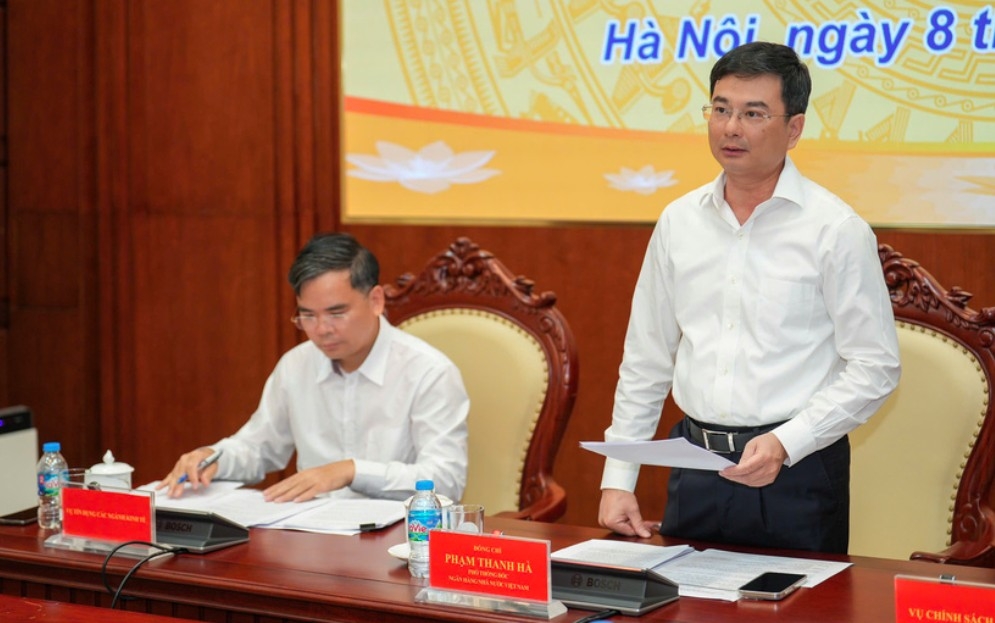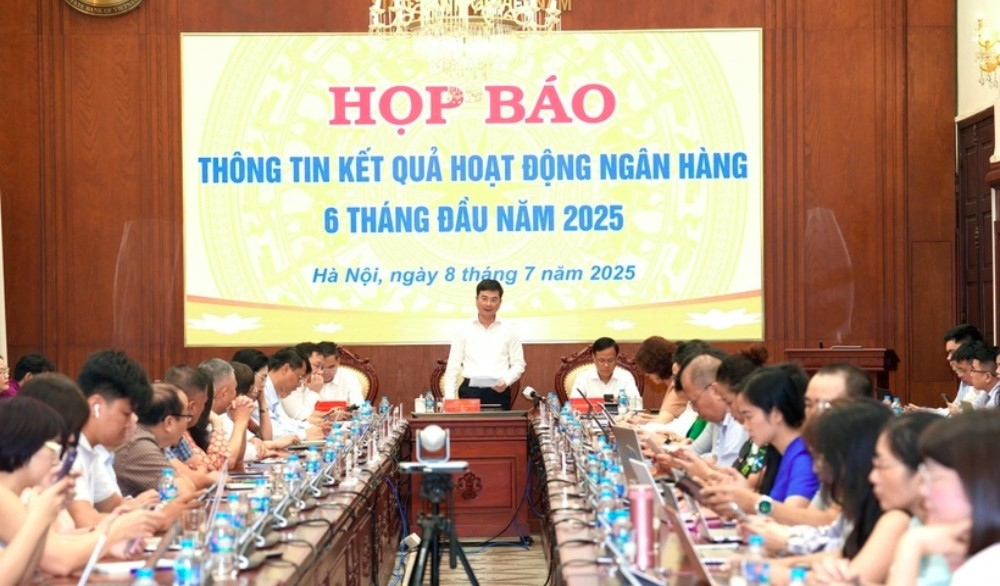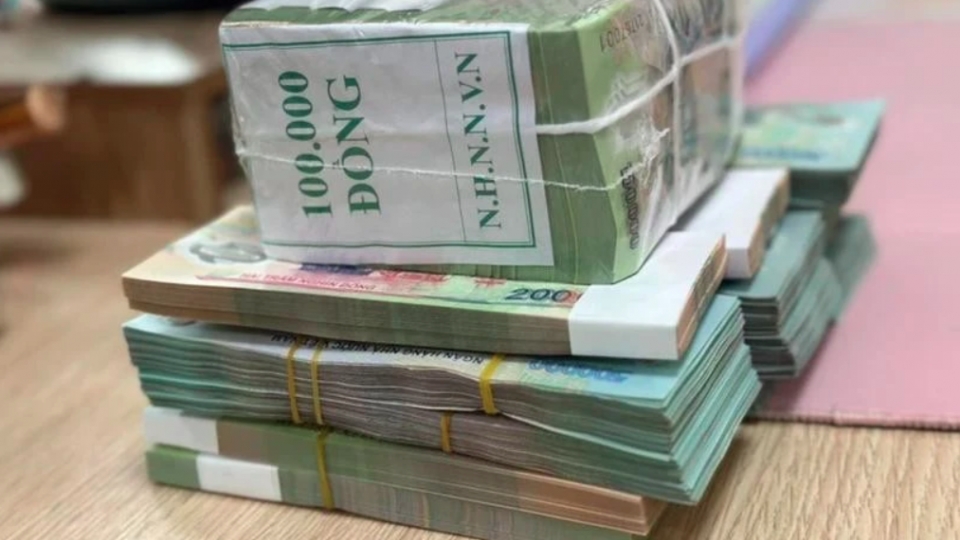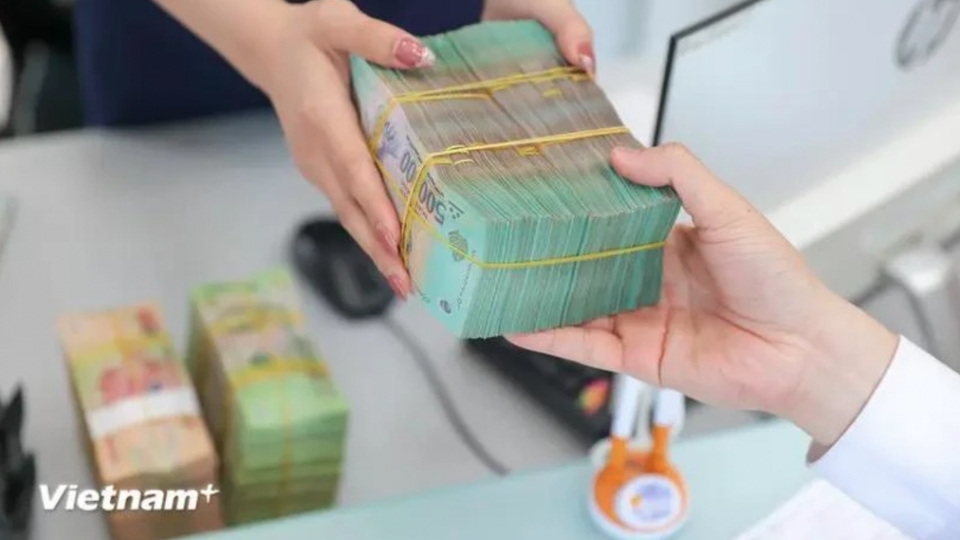Credit growth hits two-year high, nearing 10% in first half of 2025
VOV.VN - Total credit to the national economy rose by nearly 10 % in the first half of 2025 to over VND17.2 quadrillion, marking the fastest growth rate since 2023.

At a press conference in Hanoi on July 8 reviewing the banking sector's performance in the first half of 2025, Deputy Governor of the State Bank of Vietnam (SBV) Pham Thanh Ha noted that during the first half of the year, the central bank had steered monetary policy with flexibility and foresight, closely coordinating with other macroeconomic tools to ensure liquidity and control money supply effectively.
Key interest rates remained unchanged, allowing credit institutions to access low-cost capital, a vital support for businesses during the recovery phase. At the same time, the SBV directed banks to cut operating costs, accelerate digital transformation, and adopt IT solutions to lower lending rates and improve competitiveness.
On the foreign exchange front, the SBV managed the exchange rate in line with market dynamics, effectively deploying monetary policy instruments to keep the forex market stable. As a result, foreign currency needs were fully met, supporting macroeconomic stability and keeping inflation in check.
Credit policy remained central to the SBV’s agenda. With a system-wide credit growth target of around 16% for 2025, the SBV assigned lending quotas early in the year, based on transparent criteria, enabling banks to plan proactively. The lending orientation has prioritized production, key sectors, and limited exposure to high-risk areas, while ensuring a foundation for sustainable growth.
The central bank also rolled out targeted lending programs, including: VND145 trillion for social housing and old apartment renovation; VND500 trillion for infrastructure and digital technology in national priority projects; and VND100 trillion for agriculture, forestry, and fisheries. These packages not only deal with capital needs in critical sectors but also align with the broader socio-economic development strategy. Meanwhile, digital payments and banking transformation continued to gain momentum.
The banking system has invested greatly in upgrading digital infrastructure. Many institutions now conduct over 95% of transactions via digital channels. In the first five months of 2025, cashless payments soared by 45.4% in volume and 25.2% in value year-on-year. QR code transactions witnessed a 76.6% jump in volume and 179.1% in value.

Data verification efforts also progressed. By mid-June, nearly 100% of individual digital transaction accounts were authenticated using biometric data linked to chip-based ID cards or VNeID. Notably, more than 70% of institutional accounts had also been verified.
To accelerate momentum in the second half of the year, the State Bank of Vietnam has introduced a series of key measures. These include cutting operational costs and promoting digital transformation to create room for lower lending rates, maintaining a flexible exchange rate policy in line with domestic and global developments, and guiding credit growth toward productive sectors in a safe and efficient manner.
Additionally, efforts are being intensified to restructure the banking system and resolve non-performing loans. The central bank is also working to enhance non-cash payment systems, strengthen payment security, protect consumer rights, and improve public financial literacy. Together, these proactive and coordinated efforts are helping stabilize interest and exchange rates, thereby laying a solid foundation for achieving Vietnam’s 2025 GDP growth target of 8%, as set by the National Assembly and the Government.




